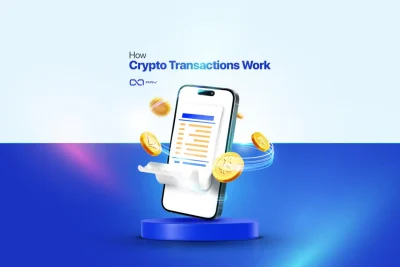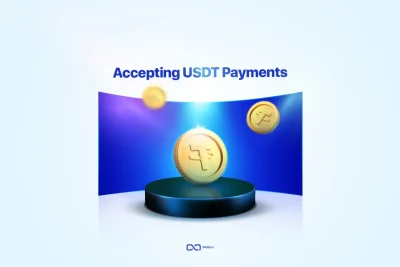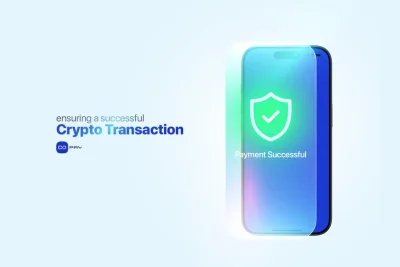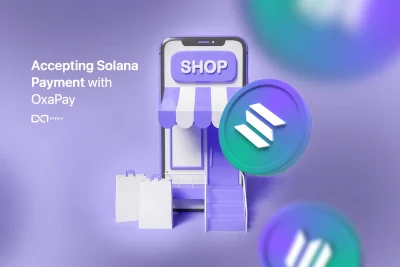Las criptomonedas operan en sistemas sin confianza, redes donde las transacciones no dependen de bancos ni intermediarios. En cambio, se basan en la criptografía. En el corazón de este sistema se encuentran dos componentes esenciales: claves públicas y claves privadas.
Ya sea para enviar Bitcoin, firmar un mensaje o acceder a un monedero descentralizado, las claves públicas y privadas son las que hacen posibles las transacciones seguras. Pero, ¿cómo funcionan? ¿Y por qué es tan importante entenderlas?
Este artículo explica todo lo que necesita saber sobre las claves públicas y privadas, desde cómo las genera el sistema hasta cómo protegen sus activos.
¿Qué es una clave pública?
Una clave pública es un código criptográfico que permite a otros enviar criptomonedas a tu dirección. El sistema la deriva de tu clave privada mediante un proceso matemático y permanece visible públicamente, similar a una dirección de correo electrónico o un número de cuenta bancaria. Cualquiera puede conocer tu clave pública, y por sí sola no supone ningún riesgo de seguridad.
En la mayoría de las cadenas de bloques, tu clave pública es:
- En dirección actual (por ejemplo, Ethereum)
- O utilizado para genere la dirección de su monedero (por ejemplo, Bitcoin)
Propiedades clave:
- Puedes compartirlo libremente.
- La gente lo utiliza para enviar fondos a su cartera.
- Sirve como identidad en la cadena de bloques.
¿Qué es una clave privada?
A clave privada es un código secreto que te da acceso a tu criptomoneda. Está matemáticamente relacionado con tu clave pública, pero el proceso es unidireccional, lo que significa que nadie puede realizar ingeniería inversa a su clave privada simplemente conociendo su clave pública.
Considérelo como su contraseña o firma. Si alguien obtiene tu clave privada, puede enviar tus fondos a cualquier parte, sin necesidad de deshacer la acción.
El software de billetera generalmente almacena claves privadas como largas cadenas de números y letras, o como frases semilla, una lista de 12 o 24 palabras.
Propiedades clave:
- Debes mantenerlo en secreto en todo momento.
- Le permite firmar transacciones.
- Quien tenga la clave privada controla los fondos.
¿Cómo se crean las claves públicas y privadas?
Algoritmos como el Algoritmo de firma digital de curva elíptica (ECDSA), comúnmente utilizadas en Bitcoin y Ethereum, generan pares de claves.
He aquí una versión simplificada del proceso:
- El sistema genera un número aleatorio seguro, que se convierte en tu clave privada.
- A continuación, utiliza esa clave privada para derivar matemáticamente tu clave pública.
- En algunas cadenas de bloques, el sistema realiza un hash de la clave pública para crear la dirección de tu monedero.
Porque las matemáticas son asimétrico, Incluso si alguien tiene su clave pública, no puede calcular su clave privada a partir de ella; esto es lo que hace que las criptomonedas sean seguras.

¿Cómo funcionan juntos?
Cuando envías criptografía, utilizas tu clave privada para firmar la transacción. Esta firma demuestra que el propietario de los fondos autorizó la transacción, sin revelar la propia clave privada.
La red utiliza entonces tu clave pública para verificar la firma. Si la firma se verifica, la transacción es válida.
Este proceso permite:
- Autenticación segura sin contraseñas
- Firmas digitales para mensajes o contratos inteligentes
- Propiedad de activos en redes descentralizadas
Formatos comunes: Claves, Direcciones y Frases Semilla
Monederos de criptomonedas suelen abstraer la gestión de claves, pero es útil conocer los formatos implicados:
- Clave privada: A cadena hexadecimal (por ejemplo, 5J2m...), o derivado en un frase semilla (12-24 palabras de recuperación).
- Clave pública: El sistema la deriva de la clave privada, y puede aparecer comprimida o sin comprimir.
- Dirección de la cartera: La versión abreviada y con hash de la clave pública utilizada para recibir pagos (por ejemplo, 0x123... en Ethereum).
Claves públicas y privadas en diferentes casos de uso
Los desarrolladores y usuarios aplican estas claves no sólo en los monederos, sino en todo el ecosistema criptográfico:
- Acceso a la cartera: Probar la propiedad y autorizar las transacciones.
- Interacción con contratos inteligentes: Firma de autorizaciones para Aplicaciones DeFi y dApps.
- Monederos multifirma: Requerir múltiples claves privadas para autorizar una transacción.
- Almacenamiento en frío: Las claves privadas se mantienen fuera de línea para eliminar el riesgo de piratería.
- Mensajería: Algunos sistemas utilizan claves públicas/privadas para cifrar y verificar mensajes seguros.

¿Qué ocurre si pierde una llave?
- ¿Ha perdido su clave privada? Tus fondos se han ido para siempre. No es posible restablecer la contraseña en criptomonedas.
- ¿Ha perdido su clave pública? No hay problema, puedes regenerarlo desde la clave privada.
Por eso copia de seguridad de su clave privada o frase semilla es absolutamente esencial.
Consejos de seguridad: Cómo mantener a salvo su clave privada
Pérdidas reales causadas por errores en las claves privadas
En 2013, James Howellsun profesional informático británico, se deshizo accidentalmente de un disco duro que contenía las claves privadas de 7.500 Bitcoin. Aunque la dirección de su billetera aún es visible en la blockchain, los fondos permanecen permanentemente inaccesibles. Ese error, cometido hace más de una década, aún lo atormenta, especialmente ahora que esos bitcoins valen más de $250 millones.
Otro ejemplo procede de 2020, cuando un usuario de DeFi compartió sin saberlo una captura de pantalla de su criptocartera en Twitter. Por desgracia, su clave privada era visible en el fondo. En cuestión de minutos, los bots escanearon la imagen, extrajeron la clave y vaciaron sobre $30,000 de su cartera. No hubo advertencia, recurso ni forma de recuperar los fondos.
Estas historias ilustran una verdad fundamental de las criptomonedas: tu clave privada es el único punto de control sobre tus activos. Si se pierde o se filtra, incluso por segundos, puede provocar una pérdida permanente e irreversible.
Buenas prácticas: Cómo proteger su clave privada
Ya sea que administre unos pocos cientos de dólares o millones en criptomonedas, estas mejores prácticas pueden ayudarlo a mantener su clave privada y sus fondos seguros.
Ningún servicio legítimo te pedirá nunca tu clave privada. Si alguien dice que la necesita para "ayudarte", es una estafa. Mantén tu clave privada y frase semilla en secreto, siempre.
2. Utilice una cartera de hardware para almacenamiento a largo plazo
Monederos de hardware como Libro mayor y Trezor almacenan tu clave privada fuera de línea, lo que las hace inmunes a los hackeos en línea. Son ideales para mantener cantidades significativas de criptomonedas de forma segura a lo largo del tiempo.
3. Evite almacenar claves digitalmente sin cifrar
No guarde su clave privada en archivos de texto sin formato, capturas de pantalla o servicios de almacenamiento en la nube como Google Drive. Si debe almacenarlos digitalmente, encriptar el archivo y guárdala en un dispositivo sin conexión o con conexión al aire.
4. Guarde varias copias de seguridad
Escriba su frase semilla y guárdela en al menos en dos lugares separados y seguros (como una caja fuerte ignífuga o una caja de seguridad). No guardes nunca todas las copias de seguridad en el mismo sitio.
5. Cuidado con los sitios de phishing y los monederos falsos
Compruebe dos veces las URL, evite descargar monederos de fuentes no verificadas y nunca haga clic en enlaces sospechosos. Muchos ataques se basan en engañar a los usuarios para que introduzcan su clave privada en interfaces falsas.
6. Utilice un PIN o una frase de contraseña segura
Si su billetera lo permite, use una contraseña o PIN adicional a su frase inicial. Esto añade una capa adicional de protección, incluso si alguien accede a su dispositivo.
7. Entienda lo que firma
Algunas estafas de contratos inteligentes engañan a los usuarios para que firmen aprobaciones que les otorgan acceso a los fondos. Siempre verifique las transacciones y aprobaciones, especialmente en aplicaciones DeFi.
Recordatorio final
Tu clave privada no es solo una contraseña, es la única clave para tus criptomonedas. En los sistemas blockchain no existe el botón "Olvidé mi contraseña". Ningún ticket de soporte puede recuperar una clave perdida. La seguridad en las criptomonedas es personal, y la propiedad conlleva responsabilidad.
Trate su clave privada como si fuera su ahorro digital, porque, en muchos sentidos, lo es.
Reflexiones finales
Comprender las claves públicas y privadas no es opcional, sino fundamental. Estos pares de claves son la base de la confianza, la propiedad y la seguridad en los sistemas blockchain.
Tanto si estás empezando como si ya trabajas con cripto, dedicar tiempo a entender cómo funcionan las claves te ayudará a mantenerte seguro, evitar errores costosos y sacar el máximo partido de lo que ofrece el cripto.
En criptografía, tu clave privada es tu poder. Protégela bien.
¿Quiere aceptar criptomonedas sin renunciar al control de sus claves?
Descubra cómo la pasarela de criptopago OxaPay le ayuda a recibir pagos directamente con total transparencia. También puede gestionar sus activos fácilmente utilizando el Billetera OxaPay, rápido, seguro y optimizado para negocios de criptomonedas.




